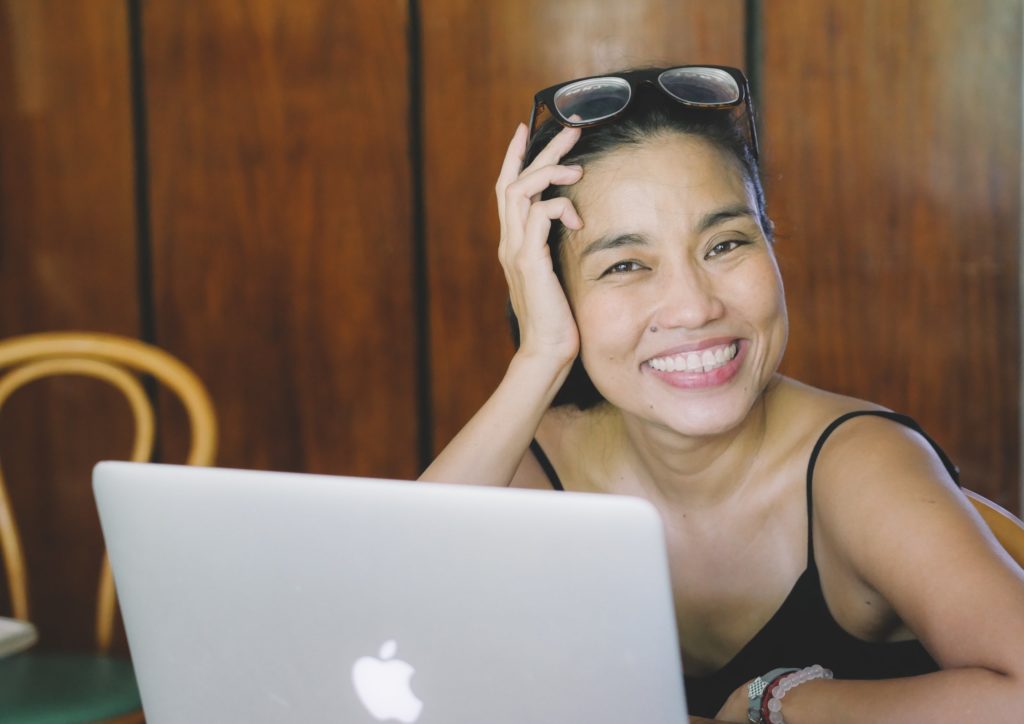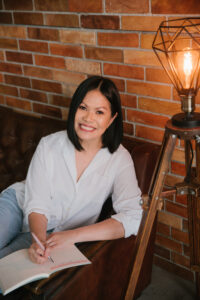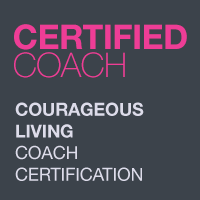I’m starting a set of articles for September called The Courage Series featuring women who have pursued their dreams with courage, persistence, perseverance and devotion so you can be inspired to pursue yours.

Apol Massebieau charts her journey from selling soft sculptures during the early days of Etsy to crafting furniture, jewelry and fashion accessories via her boutique brand, Good LucK Humans. She talks about what she had learned, what she had wished she had known when starting out and the moment when she wanted to give up…but didn’t.
1. How did you get here? How did the path of entrepreneurship begin for you?
I never had very typical jobs. I started my career in media which didn’t have a traditional 9-to-5 schedule. I would do my job at Summit Media and then sell handmade jewelry in bazaars. I also supplied them to Rhett Eala. I considered myself a hobbyist only at that point. You can only consider yourself as an entrepreneur if you look at business side of things—looking at your money, keeping a firm eye on sales and profits and growing your business every year.
(What I considered my real beginnings as an entrepreneur) started in France in 2007. It was at this point, I started an Etsy shop. My brand La Pomme became a cult hit among women who liked handmade things and had discovered Etsy. This was in the very early days when Flickr was popular and Etsy was very grassroots pa lang. I was doing soft sculptures with stories tied in to them. It was a mix of the need to make things with my hands and my background in writing. The shop was relatively successful.
During this time, customers from US, Europe, Australia and the Middle East were responding to and buying my products. I was even supplying a shop in Israel. I started to awaken to an awareness of myself as a creative entrepreneur.
Getting a grip on finances came later pa. I didn’t have a business background. It soon became apparent to me that my business could become a viable source of income. I was earning enough that I could stay home with my child and do this. I started studying about pricing. I also came to the realization that I couldn’t do it on my own. When I came back home to the Philippines, I knew in my head that I had to employ people.
I knew I had to evolve when I heard what designer Ito Kish said about my La Pomme products which focused on handmade stuffed toys for kids. “What you do, you can go out of the country, you can find that na,” he said. I knew that it was unique here but it was being done abroad already. Many other women were doing the same things. I didn’t want to compete on the pricing level because talo young workers ko—they would work really long hours and would not be compensated well. I knew I could never be okay with that.
I wanted a creative business that I would be comfortable with. My business then evolved to Good Luck Humans where we create handcrafted furniture and recycled fabric jewelry.
I’m at the stage where I’m trying to be a smart business woman but keeping the core of me as creative person. I’ve always had design ideas that were not normal or regular. A lot have been quirky or odd or strange. I’m allowing myself to do that. I’m not scared to show people this design sensibility.
2. What do you wish you did when you were just starting out?
I should have known Google spreadsheets. I should have done better data gathering on your operations, what was working or not, how much money I was making and not making. This would have helped me make better decisions.
I would also have a tendency to overspend on supplies. Today, I’m all about discipline. I’m looking at what designs will really sell and not what I love but people won’t buy. But at the same time, I can have business without taking advantage of people but pays them correctly and provides them good working conditions. When you buy from Good Luck Humans, what you’re buying is not produced on the backs of unskilled people.
3. How did you cultivate the patience and perseverance when things were slow, when business was harder than you thought it would be?
I’ve always had patience and perseverance. I was just born that way. I also feel that perseverance comes with age.
But the birth of my child made me want to give up because it was hard to have a business, a baby and living in France. What made me persevere though was that the money was good. I’ve always been a practical person. I knew it would be so stupid not to pursue it. Nag-downsize lang during that time. Instead of pressuring myself to hit high monthly sales, I was okay with earning less. I was minimum age earner during the first two years of (my daughter) Lilou’s life.
4. How did you push past your fear of failure, fear of losing money, fear of putting yourself out there?
In the beginning, I had so many doubts. I had no training in what I was doing. But I always had a good eye and had exposure. I was always very curious about design. I had no actual practical application although I was sewing before my teens.
The fears really disappeared over the decade by seeing how people react to what I do. I have also made sure that my workmanship is solid. It cannot just look good. You have to make sure that it’s well-constructed and people feel good using it. It feels good to the touch. It looks well-made. Construction is solid.
Regarding the fear of losing money, it’s not really there because I know that my product is a strong product. I put a lot of money into Good Luck Humans this year with the goal of making that back from September to December. I really feel that I have a good product, that it’s very original, it’s not derivative. It will move. I’m convinced of that.
5. What would you say to someone who’s just starting out in their business?
For entrepreneurs, keep data. Pay attention to the paperwork. Keep the data to help you run your business. You don’t know what you’ll use it for right now but you’ll see next year.
For designers, don’t let your ideas come from Pinterest or the internet or Instagram. You should be unplugging and figuring out your creative sensibility and what you want to do. Read. Go to museums. Take walks. Go out at sea and swim and look at anemones and fish. Visit street art. And spend quiet time. Shut up and shut the world out regularly. It’s a lifetime of just being able to formulate your own ideas, of not letting people tell you what you should be doing or seeing. I’m not addicted to social media and it helps me become creative.
Thank you for sharing, Apol. I will be featuring another entrepreneur for The Courage Series every Monday.







